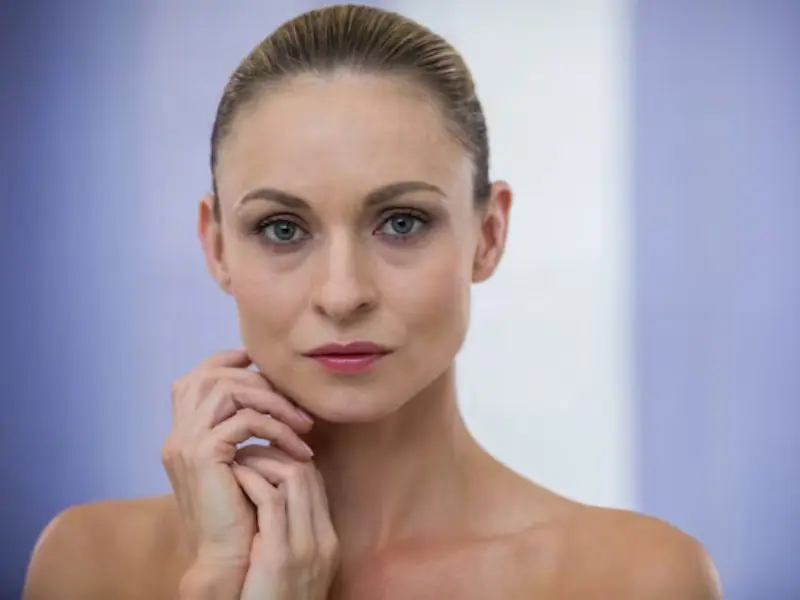Forehead reduction in Iran, also known as hairline lowering surgery, is a cosmetic procedure that can be performed on both men and women. It’s often sought by individuals who have a naturally high hairline or feel self-conscious about the size of their forehead. The procedure involves lowering the hairline to create a more balanced and proportionate facial appearance.
Forehead reduction surgery men
The surgical process of forehead reduction for men is similar to that for women. It typically involves making an incision along the hairline, removing a strip of skin, and then repositioning the hairline lower on the forehead. The goal is to achieve a more harmonious facial balance while maintaining a natural-looking result.
Men considering forehead reduction surgery should consult with a qualified plastic surgeon experienced in facial procedures. The surgeon will discuss the individual’s goals, assess their facial features, and explain the surgical technique, potential risks, recovery process, and expected outcomes.
How painful is forehead reduction?
The level of pain experienced during and after forehead reduction surgery can vary from person to person. However, most individuals report mild to moderate discomfort rather than intense pain.
During the procedure itself, patients are typically under anesthesia, so they won’t feel any pain. Afterward, in the initial days following surgery, there might be some discomfort, swelling, and tenderness around the surgical site. This discomfort is usually managed well with prescribed pain medications.
The discomfort experienced after forehead reduction surgery is often compared to a sensation of tightness, pressure, or soreness rather than sharp or severe pain. As the initial healing progresses, these sensations gradually lessen.
Forehead reduction without surgery
Non-surgical methods to reduce the appearance of a prominent forehead or high hairline are generally temporary solutions. They focus on altering visual perceptions through hairstyling, makeup, or accessories. Here are some non-surgical approaches:
- Hairstyling:
– Bangs or fringe: Styling your hair with bangs can cover a high forehead, making it appear smaller.
– Layered hairstyles: Layering hair around the face can soften the forehead’s appearance and draw attention away from its size.
- Hair Accessories:
– Headbands or scarves: Wearing headbands or scarves lower on the forehead can visually reduce its size.
– Hairstyles with accessories: Using decorative hair accessories strategically placed can divert attention from the forehead.
- Makeup Techniques:
– Contouring: Skilful makeup application using contouring techniques can create shadows and highlights to give the illusion of a smaller forehead.
– Highlighting the center of the face: Emphasizing the center of the face with makeup can shift the focus away from the forehead.
- Dermal Fillers or Botox:
– While not specifically for reducing the forehead size, Dermal fillers or Botox injections can be used to adjust the proportions of the face. For instance, filling areas around the eyebrows or temples might alter the appearance of the forehead.
Remember, these methods are temporary and won’t physically change the forehead’s size or structure. They’re effective in creating the illusion of a smaller forehead, but they don’t provide a permanent solution like surgery would.
Forehead reduction surgery side effects
Forehead reduction surgery, also known as hairline lowering surgery, like any surgical procedure, carries potential risks and side effects. Some of these may include:
- Infection: Any surgical procedure carries a risk of infection. Following post-operative care instructions diligently can help minimize this risk.
- Numbness or altered sensation: Temporary numbness or altered sensation along the incision area might occur. In most cases, this subsides as the healing process progresses.
- Hair loss: Some temporary hair loss around the incision area is common. This typically grows back as the scalp heals, but in rare cases, it may be permanent.
- Swelling and bruising: After the surgery, there may be swelling and bruising around the forehead and eye area. This is normal but usually resolves within a few weeks.
- Unsatisfactory results: The final outcome might not meet the patient’s expectations entirely. It’s crucial to have realistic expectations and thoroughly discuss desired outcomes with the surgeon beforehand.
The best age for forehead reduction
The ideal age for forehead reduction surgery, also known as hairline lowering surgery, varies from person to person and depends on individual circumstances rather than a specific age range. However, there are a few considerations:
- Physical Development: The skull and facial structures typically reach maturity by the late teens or early twenties. Waiting until the facial features are fully developed ensures that the surgeon can better assess the proportions and make more accurate adjustments.
- Stable Hairline: It’s generally advisable to undergo this surgery when the hairline has stabilized. Individuals with a naturally high hairline or those experiencing early signs of hair loss might consider this procedure after their hairline has settled to achieve more predictable and stable results.
Ultimately, there isn’t a specific “best” age for forehead reduction surgery, as it depends on a combination of physical maturity, emotional readiness, and the stability of the hairline. Consulting with a qualified plastic surgeon experienced in facial procedures can provide personalized guidance.
Forehead reduction scar
Scarring is a common concern for individuals undergoing forehead reduction surgery, also known as hairline lowering surgery. Surgeons aim to minimize visible scarring by strategically placing incisions along the hairline to make scars less noticeable.
The appearance of scars can vary depending on several factors:
- Healing Process: Each person’s healing process is unique. Factors such as skin type, genetics, and how well the individual follows post-operative care instructions can influence scar formation.
- Surgical Technique: Experienced surgeons employ techniques to minimize scarring, such as placing incisions in natural skin creases or using meticulous closure methods to reduce tension on the incision site.
- Post-operative Care: Following the surgeon’s instructions regarding wound care, avoiding sun exposure, and using recommended scar treatments or creams can promote better healing and potentially improve the appearance of scars.
- Scar Management: There are various scar management techniques, including silicone sheets or gels, laser treatments, or steroid injections, that may help improve the appearance of scars over time.
While efforts are made to make scars as inconspicuous as possible, it’s essential to understand that scars are a natural part of any surgical procedure. Initially, scars might appear red, raised, or more noticeable but tend to fade and become less prominent over time. However, individual healing and scar outcomes vary.
Discussing scar management options with the surgeon before and after surgery can help address concerns and optimize scar healing. It’s crucial to follow the surgeon’s post-operative care instructions diligently to promote proper healing and minimize the visibility of scars.
Forehead reduction cost
The cost of forehead reduction surgery, also known as hairline lowering surgery, can vary widely depending on several factors:
- Surgeon’s Experience and Location
- Procedure Complexity
- Hospital or Facility Fees
- Pre- and Post-operative Care
- Additional Procedures
The cost of forehead reduction surgery can typically range from a few thousand dollars to several thousand dollars or more. On average, in the United States, it might fall within the range of $5,000 to $10,000 or higher, depending on the factors mentioned above.
Source:healthline
FAQs about Forehead Reduction surgery
- What is the difference between forehead reduction and hairline lowering?
Forehead reduction surgery, often referred to as hairline lowering, is a cosmetic procedure involving the forehead. It’s also known as scalp advance, scalp reduction, or hairline advancement in surgical terms. This surgery aims to alter the position of the hairline, typically reducing the size of the forehead or repositioning the hairline to achieve a more proportionate facial appearance.
- What is the recovery time for hairline lowering?
Many people find it comfortable to resume their usual activities within a day after hairline lowering surgery. Those aiming to reintegrate into work or social settings can often do so within a few days. They may opt to wear a hat or scarf to conceal any sutures if they prefer.
- Is 4 fingers a big forehead?
Try this: If your forehead is broader than four horizontal fingers placed against it, it might stand out in proportion to your other facial features. It’s not widely known that plastic surgery offers options to reduce a large forehead in both men and women.
- How many cm is your forehead?
The mean height of the forehead above the lateral eyebrow measured 3.51 cm in women and 4.16 cm in men. Meanwhile, the forehead height above the peak of the eyebrow was recorded at 4.34 cm in women and 5.55 cm in men.



















